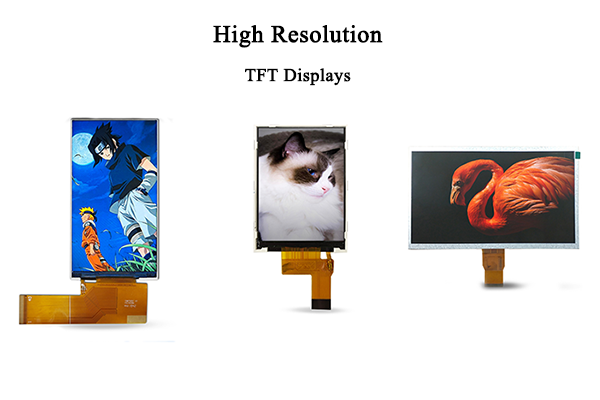How Does Screen Resolution Impact LCD Display Quality?
2025-03-11
An LCD display's quality is mostly determined by its screen resolution. Everything is impacted, including the overall viewing experience and image sharpness. Selecting the ideal screen for daily usage, work, or gaming can be made easier for consumers if they are aware of how resolution affects display performance.
1. What is Screen Resolution?
Screen resolution refers to the number of pixels displayed on an LCD screen, measured in width × height format (e.g., 1920 × 1080). Higher resolutions mean more pixels, which generally result in sharper images and finer details.
Common Screen Resolutions:
- HD (1280 × 720) – Basic resolution for budget displays and smaller screens.
- Full HD (1920 × 1080) – Standard for most monitors and TVs.
- Quad HD (2560 × 1440) – Ideal for gaming and professional use.
- 4K UHD (3840 × 2160) – Provides ultra-sharp visuals and is widely used in high-end displays.
- 8K UHD (7680 × 4320) – The highest resolution available, mainly used in cutting-edge applications.

2. How Screen Resolution Affects Display Quality
a) Image Clarity and Sharpness
Higher resolutions result in sharper images because more pixels are used to render details. For example, a 4K screen will display finer details compared to a 1080p screen, making it ideal for professional design, video editing, and high-definition gaming.
b) Pixel Density (PPI)
Pixel density, measured in pixels per inch (PPI), determines how closely packed the pixels are. Higher PPI means:
- Reduced pixelation and smoother images.
- Better text readability, especially in small fonts.
- More detailed and vibrant visuals.
c) Screen Size vs. Resolution
Resolution alone does not determine quality; screen size also plays a role. A 1080p resolution may look sharp on a 24-inch monitor but might appear less crisp on a 32-inch display due to lower pixel density.
d) Color Accuracy and Depth
Higher resolutions allow for better color reproduction and finer gradients. A high-resolution display paired with quality panel technology (such as IPS or OLED) delivers:
- More accurate colors for photography and video editing.
- Smoother gradients for realistic images.
- Better contrast and brightness balance.
e) Gaming and Motion Clarity
For gaming, resolution affects not just image clarity but also performance. Higher resolutions demand more processing power, which can impact frame rates. Gamers must balance resolution with refresh rate and GPU capabilities to ensure smooth gameplay.

3. Things to Take Into Account While Selecting a Resolution
Use Requirements: While casual users may find Full HD adequate, professionals may require higher resolutions for applications requiring attention to detail.
Hardware Compatibility: Verify that the graphics card and device (laptop, monitor, or TV) support the required resolution.
- Viewing Distance: To optimize clarity without eye strain, larger screens with greater resolutions work best when viewed from a suitable distance.
- Power Consumption: Devices that run on batteries, such as laptops and tablets, may use more power when using higher resolutions.
The sharpness, color accuracy, and general user experience of LCD displays are all impacted by screen resolution. Higher resolutions provide better images, but for optimal performance, it's important to take into account variables like screen size, pixel density, and device compatibility. Selecting the ideal resolution for your needs—whether they be work, gaming, or entertainment—guarantees the best possible display quality.
JINGDA-DISPLAY is a professional monochrome LCD display manufacture and LCM module supplier in China, we are specialized in manufacturing LCD Display for more than 10 years. The Company has a strong market position, particularly in Monochrome LCD and OLED Display. Visit our website at www.jda-display.com to learn more about our products. For inquiries, you can reach us at vincent@jdadisplay.com.




